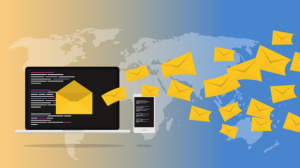Guide to Preforming a Personal Security Assesment

Performing a cybersecurity assessment for the average person involves evaluating their personal digital habits, devices, and online security practices to identify vulnerabilities and improve their security posture. Here’s a simplified approach tailored for individuals:
1. Identify Key Digital Assets
- List your devices: Include your smartphones, tablets, computers, and other connected devices (smart TVs, wearables).
- Important accounts: Identify critical online accounts, such as email, banking, social media, and cloud storage.
- Sensitive data: Consider what personal data (photos, documents, financial records) you store online or on devices.
2. Review Device Security
- Operating System Updates: Ensure all devices (phones, computers) are running the latest operating system updates.
- Antivirus and Antimalware: Install and regularly update antivirus software on computers and, if applicable, mobile devices.
- Firewall: Make sure firewalls are enabled on your devices to block unauthorized traffic.
- Encryption: Check that sensitive data, such as files on laptops, is encrypted. Use disk encryption features like BitLocker (Windows) or FileVault (Mac).
- Backup Practices: Ensure regular backups of important data (e.g., to cloud storage or an external hard drive).
3. Password and Authentication Practices
- Strong Passwords: Ensure all accounts use strong, unique passwords (consider using a passphrase or a combination of letters, numbers, and symbols).
- Password Manager: Use a password manager to store and generate strong passwords.
- Two-Factor Authentication (2FA): Enable two-factor authentication (2FA) or multi-factor authentication (MFA) on all critical accounts (email, banking, social media).
4. Assess Online Account Security
- Email Security: Use strong, unique passwords for your email accounts and enable 2FA.
- Social Media: Review your privacy settings on social media platforms. Limit the amount of personal information you share.
- Banking and Financial Accounts: Ensure these accounts have strong passwords, 2FA enabled, and monitor for suspicious activity regularly.
- Old Accounts: Identify and delete unused or dormant online accounts to reduce attack surfaces.
5. Review Network Security
- Wi-Fi Security: Ensure your home Wi-Fi uses WPA3 (or at least WPA2) encryption, and change the default password to a strong, unique one.
- Router Security: Update your router firmware and disable remote access unless absolutely necessary.
- Public Wi-Fi: Avoid using public Wi-Fi for sensitive activities like online banking. Use a Virtual Private Network (VPN) when connecting to public networks.
6. Evaluate Mobile Device Security
- Lock Screen Security: Use a passcode, fingerprint, or face recognition to lock your phone.
- App Permissions: Regularly review app permissions and uninstall apps that you no longer use.
- Updates: Keep your mobile operating system and apps up to date.
- Encryption: Make sure your phone’s data is encrypted (enabled by default on most modern devices).
7. Phishing and Social Engineering Awareness
- Email and Text Phishing: Be cautious of unsolicited emails, texts, or links asking for personal information or money. Verify the source before clicking on any links.
- Social Media Scams: Be aware of social engineering attempts on social media platforms where scammers may try to gather personal information or lure you into fake offers.
- Phone Calls: Never give personal information over the phone unless you initiated the call with a trusted entity (e.g., bank or service provider).
8. Privacy Settings and Data Sharing
- Web Browsing: Use privacy-focused browsers and search engines. Clear your browser cache regularly.
- Ad-Tracking and Cookies: Disable ad tracking and limit cookies in your browser settings.
- Location Sharing: Turn off location services for apps that don’t require it, and avoid sharing your location publicly.
- Social Media: Review your social media privacy settings, and limit who can see your posts, friend list, and profile details.
9. Backup and Recovery
- Data Backup: Regularly back up your data to an external hard drive or a secure cloud service.
- Account Recovery: Update your account recovery options (email, phone numbers) for important accounts to make sure you can regain access if needed.
- Disaster Plan: Have a plan in case of device loss, theft, or compromise (e.g., remote wipe capabilities for your phone).
10. Monitor for Suspicious Activity
- Account Monitoring: Regularly check bank statements and credit reports for unusual activity.
- Breach Notifications: Use services like “Have I Been Pwned” to check if your email or other personal data has been involved in a data breach.
- Alerts: Set up security alerts for your email, banking, and social media accounts to notify you of suspicious logins or activities.
By following these steps, the average person can significantly improve their cybersecurity and reduce the risk of falling victim to common online threats like phishing, malware, and identity theft.

